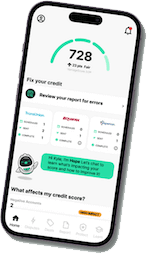Understanding the 686 Credit Score: Implications and Opportunities

Wondering what a 686 credit score really means? You’re not in bad shape—but there’s room to level up. In this guide, we break down where a 686 lands on the credit scale, what lenders think of it, what kinds of loans or credit cards you might qualify for, and how to push your score into the 700+ range. Let’s turn that “almost good” into “great.”
686 Credit Score: Let’s Break It Down
If you’ve just checked your credit and saw a 686, you’re probably wondering what that number really means. Is it good, bad, or somewhere in between? Can you get approved for a mortgage or car loan? What about those sleek cash-back credit cards?
The truth is, a 686 credit score puts you in a pretty decent spot. You’re not stuck in poor credit territory, but you’re not yet reaping the rewards that come with an excellent credit score either. In this guide, we’ll walk you through everything you need to know—from how lenders view your credit score, to what kind of loans you might qualify for, and what steps you can take to raise it even higher.
Let’s break it all down and help you move closer to the 700+ club.

Is 686 a Good Credit Score?
A credit score of 686 generally falls into the fair credit score range or “near-prime” category, depending on which credit scoring model is being used. While it’s not considered poor, it sits just below the threshold for what many lenders classify as a good credit score.
To put it into perspective, here’s how the two most widely used credit scoring models—FICO and VantageScore—categorize a 686 within their credit score ranges. Both models use similar data but weigh factors differently and define their score ranges in slightly different ways:
FICO Score Ranges:
- Poor: 300–579
- Fair: 580–669
- Good: 670–739
- Very Good: 740–799
- Excellent: 800–850
VantageScore Ranges:
- Very Poor: 300–499
- Poor: 500–600
- Fair: 601–660
- Good: 661–780
- Excellent: 781–850
With a 686, you fall solidly within the good credit score range on the VantageScore scale, and right on the cusp between a fair credit score and a good credit score on the FICO Score scale. This means most lenders will view you as a moderately low risk, but your exact credit score tier can vary slightly depending on which credit scoring model and version they use.
What Factors Make Up a Credit Score?
Understanding what influences your credit score can help you make smarter choices to improve it. All factors of your credit score are gathered directly from your credit report. Both FICO Score and VantageScore credit scoring models rely on five main categories, each with a different weight in the scoring process:
- Payment History (35%)
This is the biggest factor. Lenders want to see that you consistently pay your bills on time. Late payments, collections, or defaults can significantly hurt your credit score. - Credit Utilization Rate (30%)
This measures how much of your available credit you’re using. Keeping your credit card balances low compared to your limits—ideally below 30%, or even better, under 10%—signals responsible credit use. - Length of Credit History (15%)
The longer your credit accounts have been open and active, the better. This shows stability and experience managing credit. - Credit Mix (10%)
A healthy mix of different types of credit accounts, like revolving accounts (credit cards) and installment loans (car loans, mortgages), suggests you can handle various kinds of debt responsibly. - New Credit (10%)
Applying for multiple new accounts in a short time can temporarily lower your credit score, as it may signal increased risk to lenders.
Different credit scoring models may weigh these factors differently, which is why you may see different credit scores. Either way, the factors are all still influential and help you monitor your credit health.
By knowing what makes up your credit score, you can focus on the areas that matter most—like paying bills on time and managing your credit utilization—to steadily improve your credit history.
How 686 Compares to the Average Credit Score
According to recent data from FICO Score, the average credit score hovers around 718. So, with a 686, your credit score is just a bit below the national average — but not far off.
In fact, many Americans fall within the 650–700 range, meaning you’re in good company. The great news? You’re only a few smart financial moves away from boosting your credit score into the solid good credit score or even very good credit score territory.
Lending Options with a 686 Credit Score
Even though 686 isn’t a perfect credit score, credit card issuers and lenders still consider you a low-to-moderate risk regardless of the different credit scoring models available. That means you’re likely to be approved for a range of loans or credit cards—but your interest rates and credit limits may not be the best available.
Credit Cards
You may qualify for a variety of unsecured credit cards, including some with decent rewards. However, premium cards with the best cash back, travel points, or 0% intro APRs may require a higher credit score.
Tips to Boost Approval Odds:
- Use pre-qualification tools to avoid hard pulls.
- Apply for cards aimed at good credit scores.
- Consider a secured card to build history further.
Auto Loans
A credit score of 686 is often good enough to qualify for auto loans with reasonable terms, especially if you have steady income and low existing debt. However, you may not receive the best promotional rates unless you push your credit score above 700.
Expect interest rates around 6% to 9% depending on the lender.
Personal Loans
You can likely qualify for personal loans, but rates will vary. Some lenders may offer interest rates between 10–20%, depending on your credit mix and debt-to-income ratio.
Online lenders and credit unions may be more flexible than big banks.
Mortgages
With a 686 score, you may be eligible for several types of mortgages:
- FHA loans: These government-backed loans are often approved for credit scores as low as 580.
- Conventional loans: You might qualify, but your interest rate could be higher than someone with a 740+ score.
A larger down payment or stronger income can help you negotiate better terms.
How to Improve Your Credit Report
Ready to break into the 700+ club? With focused effort and patience, it’s absolutely achievable. Here are the most effective steps you can take to boost your credit report and score:
1. Pay Your Bills On Time
Your payment history is the most important factor in your credit score, making up about 35% of it. Just one late or missed payment on your credit report can lead to a drop, so consider setting up autopay or reminders to stay on track.
2. Lower Your Credit Utilization Rate
Try to keep your credit card balances below 30% of your available limit, and if you can, aim for under 10%. High balances compared to your limits send a red flag to lenders that you might be overextended.
3. Avoid Applying for Too Much Credit at Once
Each hard inquiry on your credit report can ding your credit score slightly, especially if you have several in a short span. Be strategic about applying for new credit to minimize these hits.
4. Keep Old Accounts Open
The length of your credit history influences about 15% of your credit score. Closing older cards can shorten your average credit age, so hold onto your oldest accounts unless there’s a strong reason to close them.
5. Add Positive Tradelines
If your credit report is thin or you want to build more positive history, consider tools like secured credit cards, credit builder loans, or becoming an authorized user on someone else’s account. These can help boost your credit score over time.
6. Diversify Your Credit Mix
A balanced mix of credit types—such as credit cards (revolving credit) and installment loans (like car loans or mortgages)—on your credit report can improve your credit score by showing lenders you can manage different kinds of debt responsibly.
7. Monitor Your Credit Report Regularly
Keep an eye on your credit reports and scores to track progress and catch errors or fraud early. You can get your free annual credit reports from each credit bureau at AnnualCreditReport.com, and many apps provide free FICO Score or VantageScore monitoring.
8. Negotiate or Settle Outstanding Debts
If you have any past-due accounts, collections, or charge-offs, negotiating a payment plan or settling debts can improve your credit profile. Sometimes, creditors will agree to remove negative marks once you’ve paid or settled the debt, which can give your credit score a boost.
How Long It Takes to Reach 700+
Improving from 686 to 700 is very possible—and could take as little as 3–6 months depending on your situation.
Let’s look at two examples:
- Quick Boost: If your credit score is dragged down by high credit utilization, paying down balances could push you over 700 in just a few months.
- Slow Climb: If you’re rebuilding from late payments or collections on your credit report, it may take 6–12 months of consistent on-time payments and responsible credit use to reach 700.
A General Timeline:
- Month 1–2: Lower balances, fix any errors, avoid new inquiries
- Month 3–5: On-time payments, credit mix improves, utilization drops
- Month 6+: Positive history builds, negotiate debts, credit score steadily rises
Mistakes to Avoid While Working on Your Credit
If you want to improve your credit report—and keep it moving upward—it’s just as important to steer clear of these common pitfalls:
1. Missing Payments
Your payment history is the single most important factor in your credit score, accounting for about 35%. Even one missed or late payment can cause your credit score to drop by 50 points or more. Consistently paying late signals risk to lenders, and the longer a payment goes unpaid, the bigger the negative impact.
2. Maxing Out Credit Cards
Credit utilization—the percentage of your available credit you’re using—is the second most significant factor, making up about 30% of your credit score. If you max out a card, even one with a low limit like $500, it sends a strong warning signal that you might be overextended. High balances can quickly drag your credit score down, so keeping balances low is key.
3. Submitting Too Many Credit Applications
Each time you apply for credit, a hard inquiry appears on your report. Multiple inquiries within a short timeframe suggest to lenders that you may be facing financial difficulties or taking on too much new debt. This can cause your credit score to drop temporarily and may make lenders hesitant to approve you.
4. Closing Old Credit Accounts
While it might seem like closing unused cards is smart, it can actually harm your credit score. Closing old accounts shortens your average credit history length—a factor that accounts for 15% of your credit score—and reduces your total available credit, which can increase your credit utilization ratio. Both effects can lower your credit score.
5. Ignoring Your Credit Report
Failing to check your credit reports regularly means you might miss errors, outdated information, or even signs of identity theft. These inaccuracies can unfairly lower your credit score or lead to financial trouble if left uncorrected. Monitoring your credit lets you catch problems early and dispute inaccuracies to keep your credit healthy.
Benefits of a Higher Credit Score
Reaching a credit score of 700 or above opens the door to many valuable benefits that can save you money and improve your financial flexibility. Here’s what you can expect:
Lower Interest Rates
Lenders see higher credit scores as less risky, so you’ll often qualify for lower interest rates on credit cards, auto loans, mortgages, and personal loans. Even a small reduction in your interest rate can save you hundreds or thousands of dollars over the life of a loan.
Higher Approval Odds for Premium Credit Products
With a strong credit score, you gain access to premium credit cards and loan products that offer better rewards, perks, and lower fees. These products are often off-limits to borrowers with lower credit scores.
Increased Credit Limits and Better Terms
Lenders are more likely to offer higher credit limits and more favorable repayment terms when you have a solid credit history and higher credit score. This can improve your credit utilization ratio and give you more financial flexibility.
More Negotiating Power
A good credit score gives you leverage when shopping for loans or negotiating terms. You can often ask for better rates, waived fees, or additional benefits—simply because lenders see you as a reliable borrower.
Greater Financial Confidence and Freedom
Beyond numbers, a higher credit score reduces financial stress and opens up more opportunities. You’re better positioned to handle emergencies, make big purchases, and plan for your future with peace of mind.
Think of your credit score as a financial tool: the higher it climbs, the more powerful and valuable that tool becomes—helping you build wealth and achieve your goals with greater ease.

Conclusion
A 686 credit score puts you in a solid position, but there’s always room to grow—and reaching 700 or higher can open even more doors to better rates, approvals, and financial freedom. By focusing on timely payments, managing your credit utilization, keeping older accounts open, and monitoring your credit regularly, you can steadily improve your credit score and build a stronger financial future.
If you’re ready to take the next step, tools like Dovly can simplify the process by helping you track your credit, dispute inaccuracies, and provide personalized guidance tailored to your unique situation. With the right support, moving from good to great credit is within reach.
Start today and make your credit work harder for you.
Frequently Asked Questions



